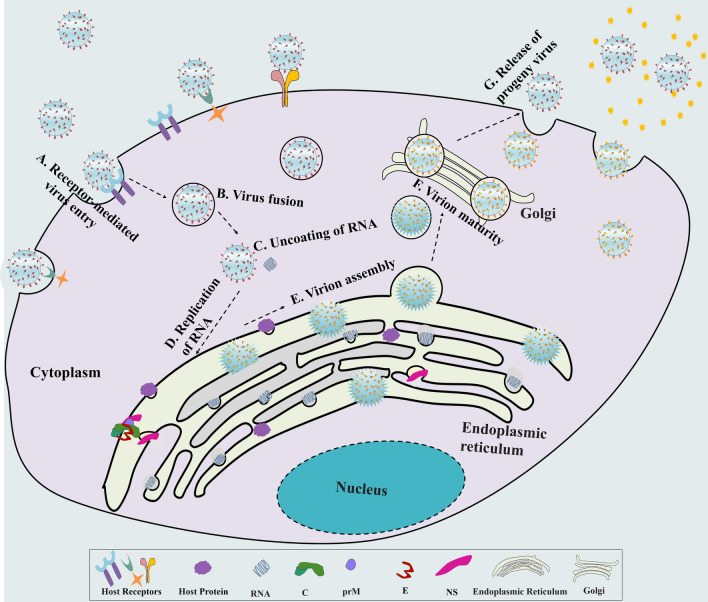Figure 1.
Propagation process of flaviviruses. Flavivirus propagation mainly includes adsorption, entrance, replication, assembly, maturity and release. The virus enters host cells through host receptor recognition (A); then, the virus fuses with the host membrane (B), and the RNA of flavivirus is ejected from the nucleocapsid and released into the cytoplasm of the host cells (C). RNA replication, protein synthesis and particle assembly are carried out in the ER (D and E); the particles mature in the Golgi apparatus (F); subsequently, mature virions are released from the host cells (G).

